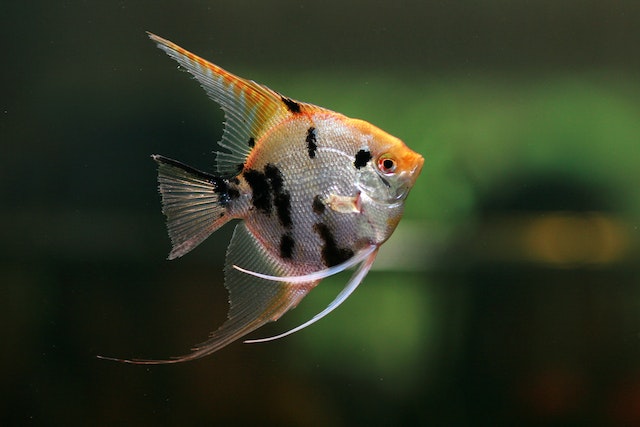Angelfish are a popular species of freshwater fish known for their unique appearance. One distinguishing feature of angelfish is their feelers, which are small, thin appendages that protrude from their heads.
These feelers, or barbels, are present in male and female angelfish and serve various essential functions.
One of the primary reasons why angelfish have feelers is to help them navigate their environment. Angelfish are naturally curious creatures and use their feelers to explore their surroundings and locate food sources.
Additionally, these feelers contain sensory cells that are highly sensitive to changes in water pressure, which allows angelfish to detect potential predators and other threats in their environment.
Overall, the feelers are essential to the angelfish’s sensory system and play a critical role in their survival.
Anatomy of Angelfish
Body Structure
Angelfish are known for their distinctive body shape, which is tall and thin with a compressed body. They have a single dorsal fin that runs along the top of their body and extends into a long, flowing filament.
Their anal fin is similarly elongated, and their pectoral fins are large and fan-like. The caudal fin is deeply forked, giving the fish excellent maneuverability and speed.
Angelfish have a bony skeleton, which provides them with the support they need to swim and move around in their environment.
Their scales are also bony, which helps to protect them from predators and other threats. The scales are arranged in a pattern resembling the roof tiles, with each scale overlapping the one behind it.
Sensory Organs
Angelfish have several sensory organs that help them to navigate their environment and locate food. They have a lateral line system, a series of sensory cells that run along the length of their body.
This system allows them to detect changes in water pressure and movement, which can help them to locate prey and avoid predators.
Angelfish also have a pair of nostrils near their eyes, which they use to detect chemical cues in the water. This sense of smell is essential for finding food and identifying potential mates.
Additionally, angelfish have eyes on either side of their head. They have excellent vision, which allows them to see in low-light conditions and detect movement in their environment.
Finally, angelfish have a pair of long, thin feelers located on their heads. These feelers, also known as barbels, detect food and other objects in the water.
They are handy for finding food hidden in crevices or other hard-to-reach places.
Function of Feelers
Angelfish are known for their unique feelers, which are also called barbels. These small, slender appendages are on the fish’s face, just below the mouth. While they may seem minor, these feelers are essential for the angelfish.
Communication
One of the primary functions of angelfish feelers is communication. These fish use their feelers to interact with other members of their species.
Angelfish are social creatures and use their feelers to signal to one another. They can use their feelers to indicate aggression, submission, or even to attract a mate.
Navigation
Another essential function of angelfish feelers is navigation. These fish use their feelers to sense their surroundings and navigate their environment.
Angelfish are known for their ability to swim through tight spaces; their feelers help them do this. They can detect obstacles and other fish, allowing them to move through their environment easily.
In conclusion, angelfish feelers serve an essential function for these fish. They are used for communication and navigation, allowing the fish to interact with one another and navigate their environment with ease.
Environmental Adaptation
Habitat
Angelfish inhabit coral reefs, rocky crevices, and other areas with ample hiding spots and structures to swim through.
They tend to prefer areas with strong currents, as this helps disperse their eggs and larvae and provides them with a constant supply of food.
Their feelers help them navigate these complex environments, allowing them to sense their surroundings and avoid obstacles.
Predator Avoidance
Predators such as larger fish, crabs, and birds of prey are common in the habitats where angelfish are found. The feelers of the angelfish help them detect predators and avoid being eaten.
When threatened, angelfish will often hide in crevices or among rocks. Their feelers also help them detect potential food sources, allowing them to forage more efficiently.
Overall, the feelers of the angelfish are an essential adaptation that allows them to thrive in their unique environments.
By helping them navigate and avoid predators, these feelers play a critical role in the species’ survival.




